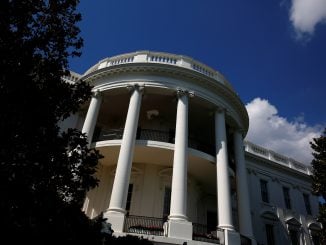
Lesson 2: Find creative ways to encourage both sides of every argument.
Throughout his life, Madison retained great faith in the power of the free press to remedy the evils arising from “fake news,” as we call it today. Despite the persistence of such “abuses,” Madison believed that “the world is indebted [to the press] for all the triumphs which have been gained by reason and humanity, over error and oppression.” If one paper published “falsehood and slanders,” these untruths could be corrected “in a certain degree, by contradictions in rival or hostile papers.”
Nevertheless, Madison was not naïve. He understood that “the one-sided publications which happen to predominate at particular periods” created a “delusion” in the minds of people who encountered only perspectives that reinforced their own opinions. He whimsically suggested that the perfect solution might be an arrangement whereby each sheet of newspaper was printed on one side by a press representing one party, then printed on the other side by its rival. That way, readers could not avoid “both sides of every question,” and “truth would always have a fair chance.”
Instead of promoting free speech on college campuses by inviting the most polarizing or even inflammatory speakers, universities should be encouraging more bipartisan debates.
Given the insularity and nasty tone of today’s media “bubbles,” Madison’s suggestion might require further refinement. Currently, both sides in the political debate are writing in such polarizing fashion that a media diet that included listening to the other side’s overheated polemics would not likely moderate or broaden anyone’s opinions. Studies have shown that the experiment may have the opposite effect.
Far more constructive would be publications or events designed to engage opposing sides in a format that encouraged civil disagreement. Instead of promoting free speech on college campuses by inviting the most polarizing or even inflammatory speakers, universities should be encouraging more bipartisan debates. Robert George and Cornel West are two academics with sharply contrasting political opinions, yet they have teamed up to encourage students to challenge their pre-existing beliefs in a spirit of “civic friendship.” This example, all too rare today, is surely worthy of emulation.
Lesson 3: Socialize with your (political) enemies.
In the early republic, members from different parties lived in separate boarding houses and rarely met for any purpose other than waging political battles. When he was president, Thomas Jefferson would host a dinner with Federalists on one evening and invite only Republicans the next.
Madison’s administration established a social change in the nation’s capital — one owing perhaps more to the president’s vivacious and charming first lady. Dolley Madison instituted regular Wednesday “drawing room nights” at the White House, and everyone was invited. Her nonpartisan parties became so popular that they were known as “squeezes.” One guest, Pennsylvanian Rep. Jonathan Roberts, observed: “By her deportment in her own house you cannot discover who is her husband’s friends or foes.”
Of course, partisan rancor did not magically disappear over whipped syllabub and ice cream, but it was softened. One may disagree, vehemently, with a dining companion, but it becomes harder to demonize him.
Even in the spring of 1812 — when a looming presidential election and the possibility of war were fraying everyone’s nerves — Dolley’s charm offensive made hyper-partisanship socially awkward. The Federalists tried to boycott her soirées but changed their minds when the Republicans surged into her drawing room in greater numbers. The festive crowds representing only the president’s party, she reported, “alarm’d” the opposition party “into a return. They came in a large party last night also & are continuelly calling.”
Today, anecdotal evidence suggests that politicians in Washington have reverted to the worst tendencies of the early republic: they rarely socialize with members from the other party. Some evidence suggests that female politicians are more likely to socialize across party lines or reach across the aisle politically, but other studies dispute that characterization. In any case, the country would benefit from more examples of Dolley Madison’s nonpartisan social graces — whether it comes from the gentlemen or the ladies.
Lynn Uzzell teaches American politics and rhetoric at the University of Virginia and Washington and Lee University. For four years she was also the scholar in residence at the Center for the Constitution at James Madison’s Montpelier. She specializes in the Constitutional Convention of 1787 and the political thought of James Madison.
This essay is part of RealClearPublicAffairs’s 1776 Series, which explains the major themes that define the American mind. It is the second of a three-part series in the North State Journal. Republished with attribution.




